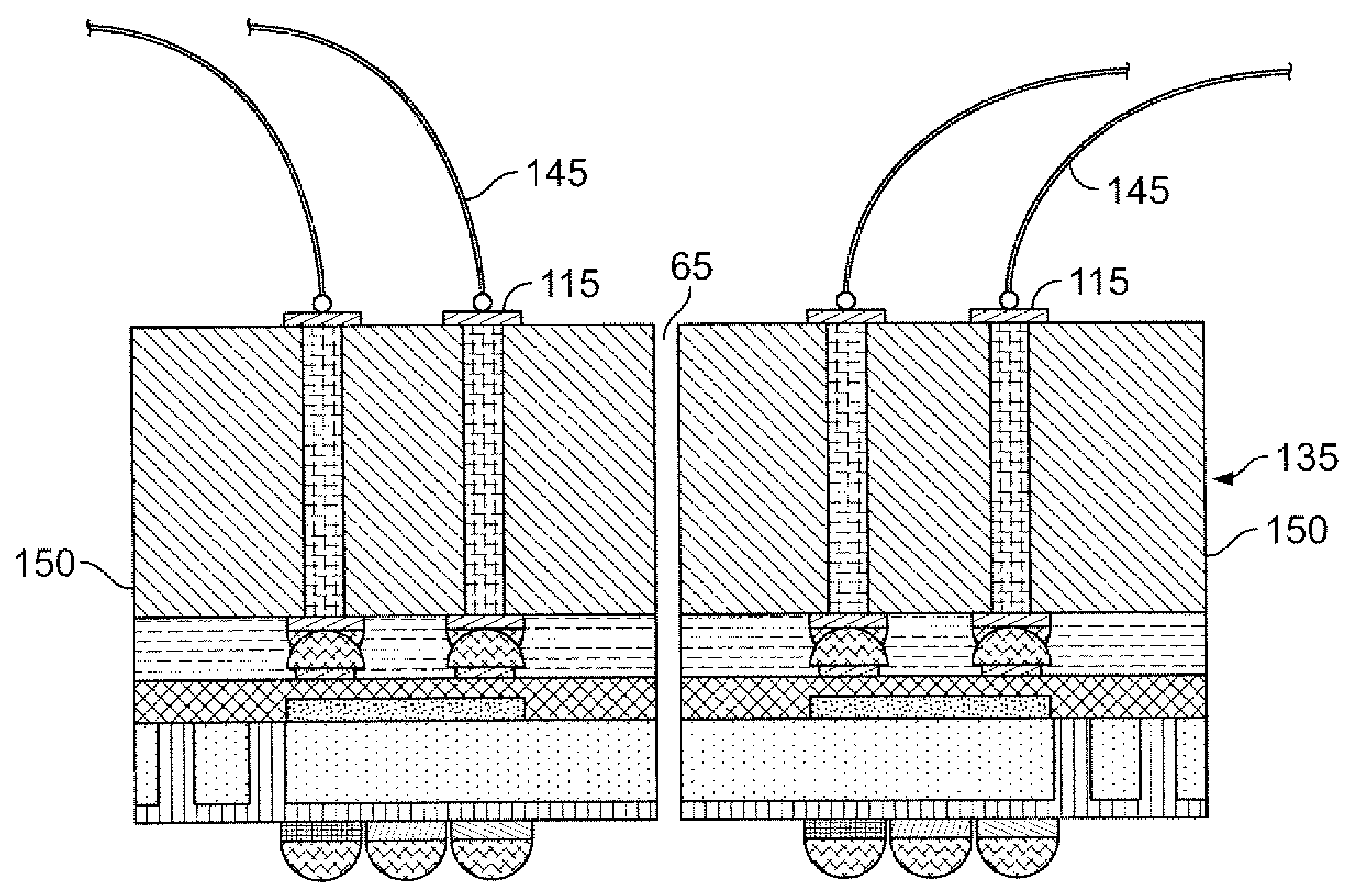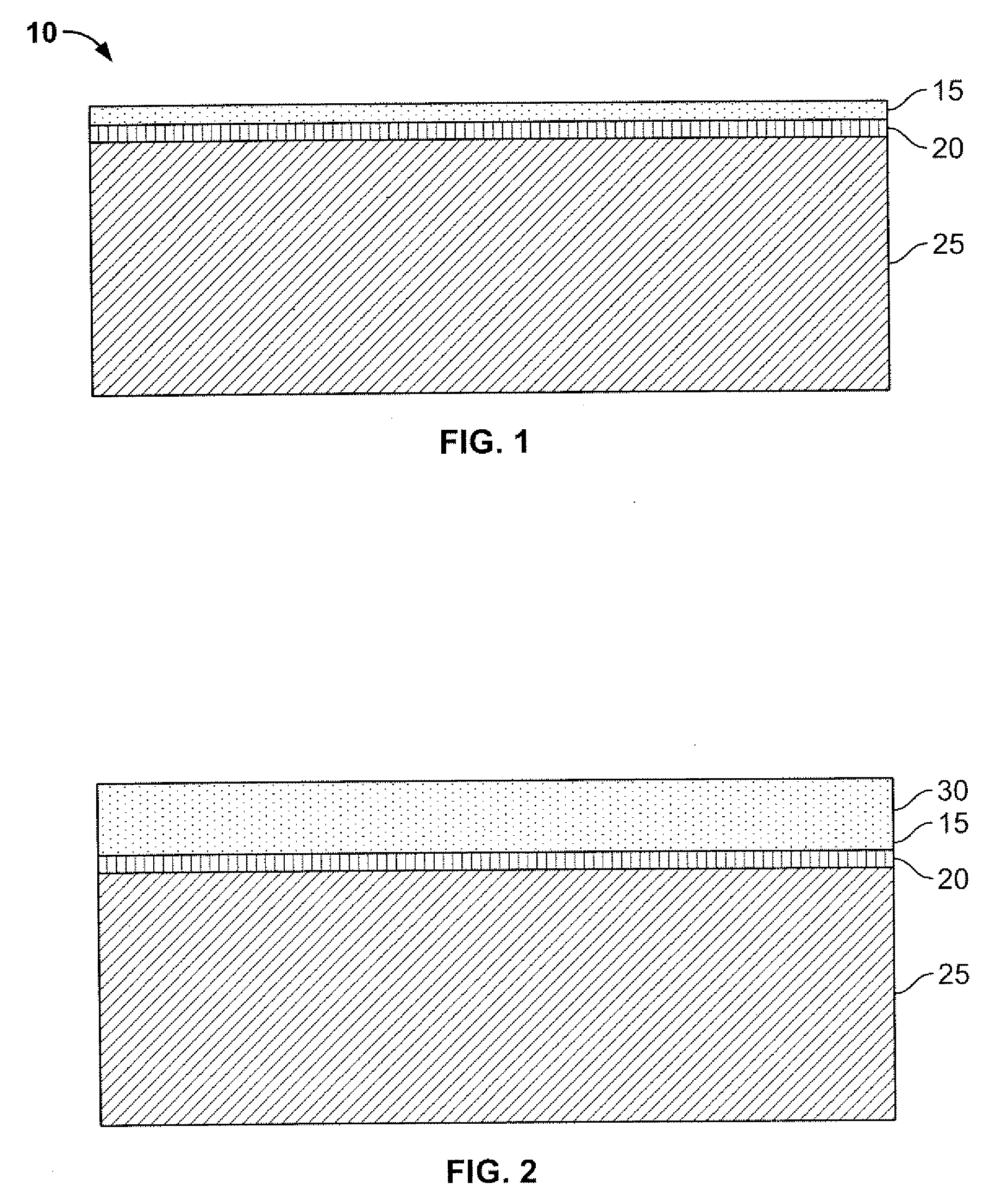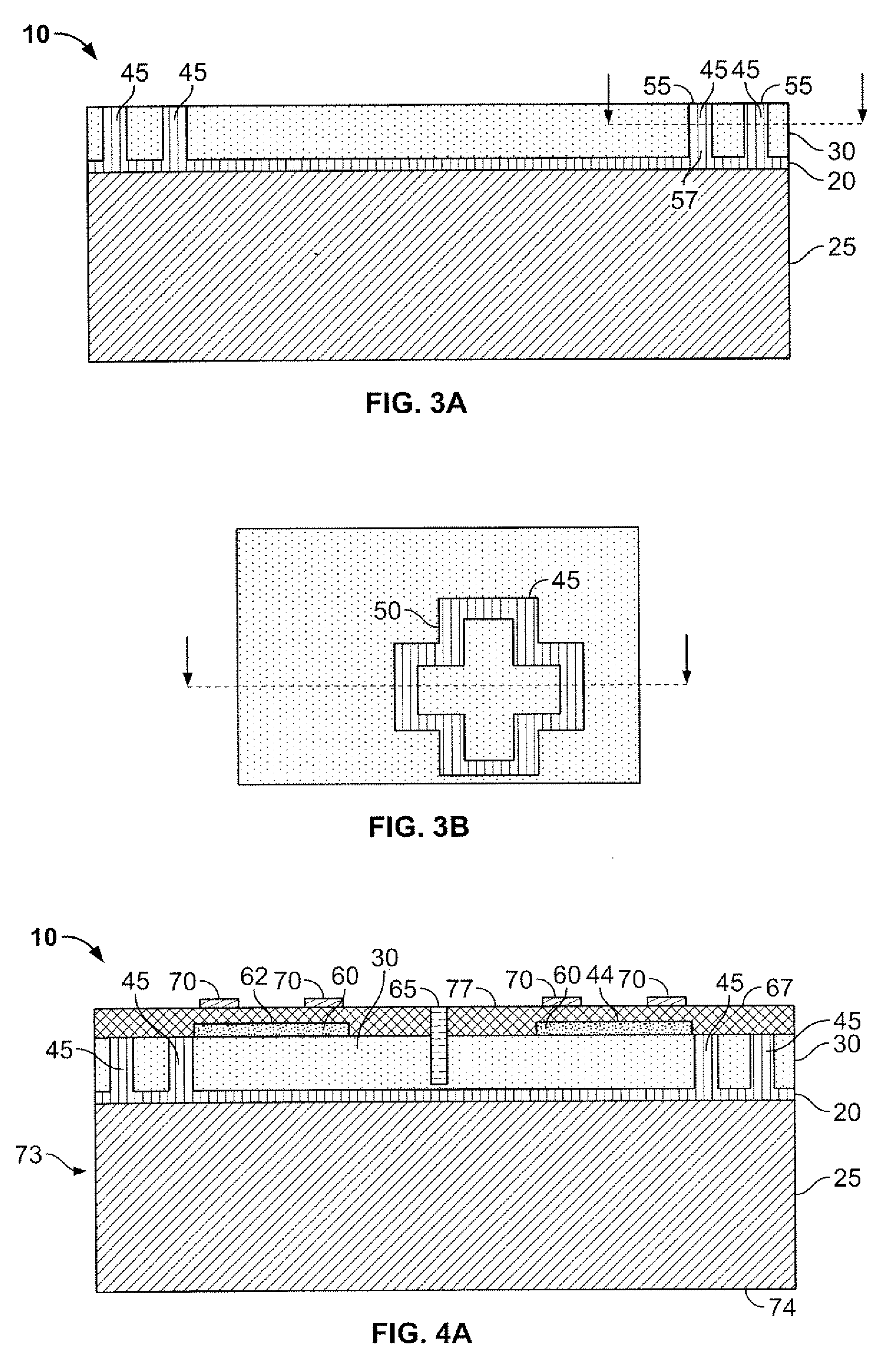Method of Fabricating Back-Illuminated Imaging Sensors Using a Bump Bonding Technique
a technology of bump bonding and imaging sensors, which is applied in the direction of semiconductor devices, semiconductor/solid-state device details, electrical apparatus, etc., can solve the problems of front side illumination, imagers with significant performance limitations, low fill factor/low sensitivity, etc., and achieve the effect of reducing the overall siz
- Summary
- Abstract
- Description
- Claims
- Application Information
AI Technical Summary
Benefits of technology
Problems solved by technology
Method used
Image
Examples
Embodiment Construction
[0039]The following embodiments are intended as exemplary, and not limiting. In keeping with common practice, figures are not necessarily drawn to scale.
[0040]FIG. 1-15 illustrate an embodiment of a process for manufacturing thinned back-illuminated imagers and a resulting structure. FIG. 1 illustrates initial substrate 10 sometimes referred to in the art as a semiconductor-on-insulator (SOI) substrate. Starting SOI substrate 10, shown in FIG. 1, is composed of handle wafer 25 to provide mechanical support during processing, an insulator layer 20 (which can be, for example, a buried oxide layer of silicon), and seed layer 15. In the present embodiment, the handle wafer 25 may be a standard silicon wafer used in fabricating integrated circuits. Alternatively, the handle wafer 25 may be any sufficiently rigid substrate composed of a material which is compatible with the steps of the method disclosed herein. Insulator layer 20 may comprise an oxide of silicon with a thickness of about ...
PUM
 Login to View More
Login to View More Abstract
Description
Claims
Application Information
 Login to View More
Login to View More - R&D
- Intellectual Property
- Life Sciences
- Materials
- Tech Scout
- Unparalleled Data Quality
- Higher Quality Content
- 60% Fewer Hallucinations
Browse by: Latest US Patents, China's latest patents, Technical Efficacy Thesaurus, Application Domain, Technology Topic, Popular Technical Reports.
© 2025 PatSnap. All rights reserved.Legal|Privacy policy|Modern Slavery Act Transparency Statement|Sitemap|About US| Contact US: help@patsnap.com



